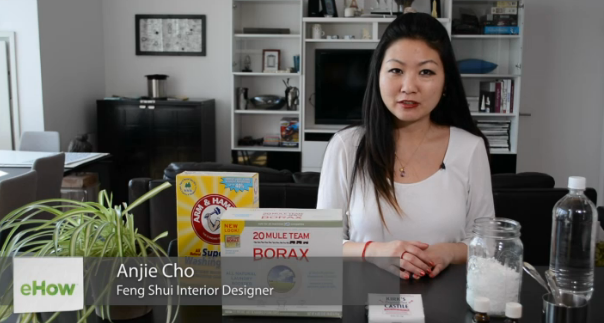Low VOC paints provide an eco-friendly way to change the look and feel of your space. Donate extra supplies and buy locally to prevent waste and support local eco-systems.
see more eHow.com videos here
Video Transcript:
Hi, my name is Anjie Cho, and this is a video about eco-friendly home decorating.
There are many simple ways to decorate your home in an eco-friendly way. Something that many of my clients want to change when it comes to home decorating is the color of the paint on the wall. This is a fairly easy and inexpensive way to change up the way your home looks and feels. But, no matter what color you choose, the type of paint you go with can make a difference.
The green option is to go for a low or Zero VOC paint. VOC stands for Volatile Organic Compound. Toxins are released into the air by traditional VOC paints, and sadly VOC paints release toxins into the air for years after the paint is applied. There are so many different paint companies now that offer low or Zero VOC options.
The other plus is that they have minimal odor when wet. There are even Zero VOC food-based paints available made with milk casein. Benjamin Moore, which is one of the most commonly found paint companies, has a Zero VOC product called Natura. Other companies that offer high performance Zero VOC paints are Yolo Interior Paints, Ivy Coatings, they're local to me and made in Brooklyn, New York. They are also a true Zero VOC premium quality non-toxic paint. Finally, SafeCoat is also a premium quality Zero VOC paint. The Zero VOCs are really easy to find.
Next, look for low VOCs in your polyurethane. We use polyurethane to finish wood floors and other wood furnishings. Another alternative to finishing wood is to use tung oil or linseed oil. Those are also naturally occurring.
Other considerations when it comes to eco-friendly home decorating are to incorporate as many reclaimed materials as possible. These can be purchasing vintage furniture items or reusing and re-purposing something that you already have instead of buying something new. And the other end of this is to be sure to donate anything you don't need or use anymore rather, rather than throwing it out.
Finally, buy local. This can be as simple as purchasing from a local mom and pop store even if the item is manufactured elsewhere. You can even get more local and research furniture materials that are manufactured near your home. Local manufacturing is more eco-friendly because there's less transportation and gas emissions involved. And also buying local strengthens your community.
This is Anjie Cho and I'm a Green Interior Architect with Anjie Cho Architect and Founder of Holistic Spaces. And this has been eco-friendly home decorating.






